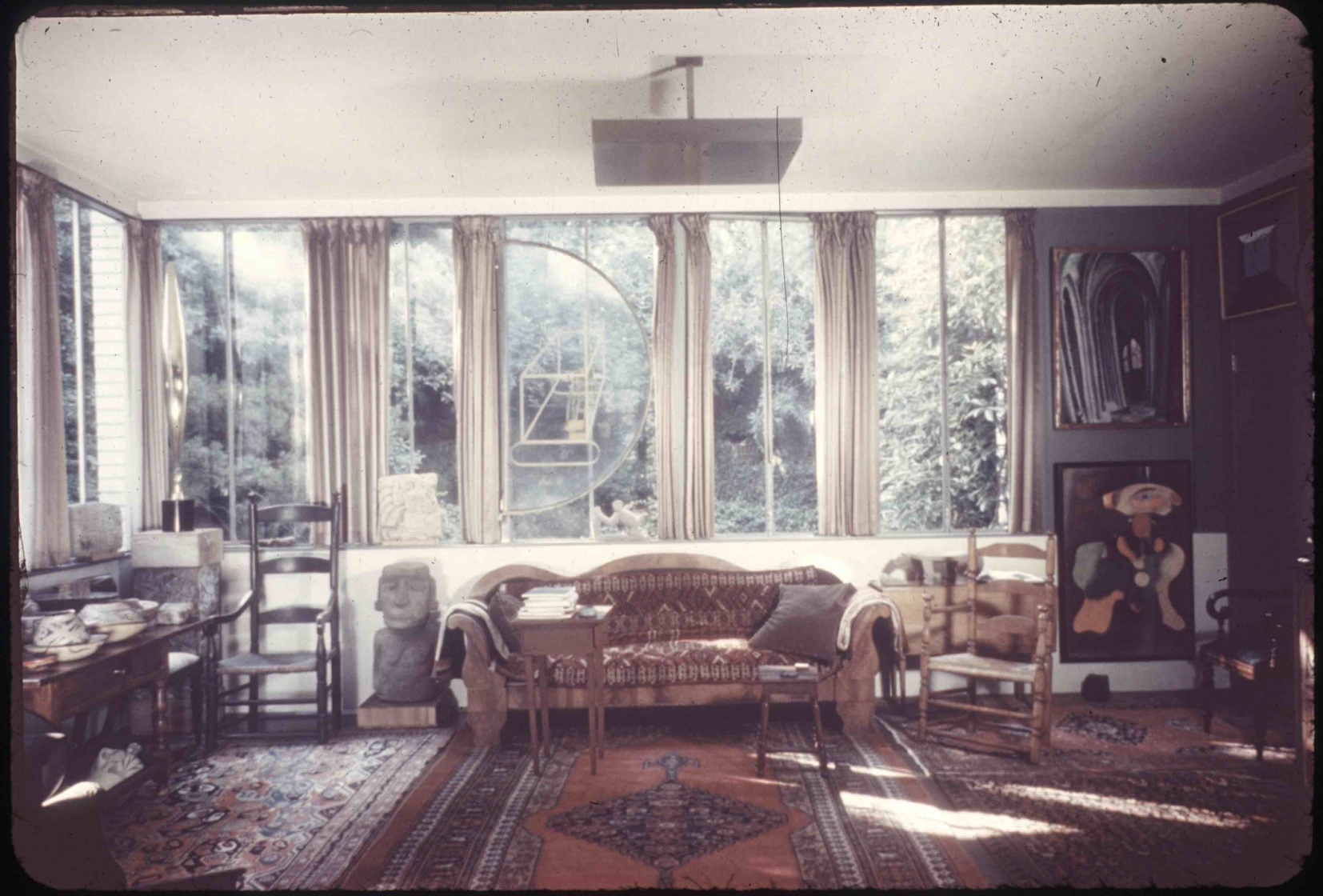Walter Hopps visits the Arensberg Collection

In 1948, when he was in eleventh grade at Eagle Rock High School, Walter Hopps was selected to be in a group of students to get some extra-curricular exposure to the arts. These were math and science kids, and the idea was to expand horizons by learning about other forms of knowledge. They met on Saturday afternoons and saw such things as Greek and Roman antiquities at the Los Angeles County Museum of Art and Leonardo da Vinci materials at the Elmer Belt Library. During that time the US Army was touring an exhibit of artworks that had been looted by the Nazis, and the students went to see that at the Huntington Library. But for Hopps it was a visit to the home of Louise and Walter Arensberg in the Hollywood Hills that changed everything. From that moment he dropped out of the school program and instead visited the Arensbergs every Saturday, to look at the art and read about it in their library.
“The most astounding field trip of that program was to the home of the collectors and art patrons Walter and Louise Arensberg. I was fifteen when I went there for the first time, and the minute I walked through their front door it was as if I’d passed through the looking glass. I was just stunned. There was more modern art than I had seen anywhere. No museum in Southern California had anything like their collection. There were important artworks everywhere. They weren’t used in any way decoratively and they took precedence over the furniture: chairs, desk, tables, anything associated with the normal activities of daily life was in second position. The art was hung edge to edge – it was everywhere and in every room. You could open a coatroom door and there would be pictures hung on the inside of that door. Or on both sides. All the conventional rules went out the window. For kids to see that people even older than their parents lived in such a way was absolutely liberating. It was my own version of Frances Hodgson Burnett’s secret garden.
I knew of Duchamp, but I’d never seen his work in person and suddenly I was in the world’s largest and most complete collection of his art. The Arensbergs had three versions of Nude Descending a Staircase. They had a huge number of Brancusis. There was also a curious Magritte painting. I had a feeling that Magritte was trying to tell a story with it – there seemed to be some kind of symbolic narrative – so I asked Walter Arensberg if he could explain it. I didn’t ask him what the Duchamps meant – they just were absolutely what they were, fascinating and an amazing contrast to the beautiful refinement of the Brancusis. But the Magritte looked as if it had something to say that could be decoded, so I asked about it. Mr. Arensberg smiled and said, “Are you ready to really understand what it means?” I said, “ I think so. I hope so.” Then he gave me what is, in Zen Buddhism, called a hard lesson. He said, “You must look at this painting and understand that it means absolutely nothing.” It was as if a master had asked me if I was ready for enlightenment and then thrown a glass of ice water in my face. For the next few days that was what constituted enlightenment. It became a laborious workout, intellectually: Why did he say that? What could it mean? I’ve never seen anyone teach a class more economically, with so few words. And the lesson I learned was not that the painting meant nothing but that there weren’t going to be any easy answers about its meaning. I had to somehow sense or pick up on the curious poetry that Magritte was playing around with. I was thrilled.”
The photograph here is of the sunroom at the home of Louise and Walter Arensberg, with Duchamp’s Glider, 1913-15, in the window. It was taken by Dr. Fritz (Fred) Block, a German émigré architect who had remade himself as a professional photographer in his new home town. Working with a Leica camera and Kodachrome slide film he set out to create “a colorful inventory of the most significant artifacts of primitive and modern times.” and packaged the images as instructional study guides to sell to museums and universities around the country, offering topics as varied as zoo animals, modern industrial design, the art of the South Pacific, and the new, modernist architecture of Southern California. The range of his interests seems extraordinarily wide-ranging. An addition to the Hollywood Hills house, for a sunroom and a library for Walter Arensberg’s collection of Francis Bacon arcana, was designed by Richard Neutra and Gregory Ain. An invoice in the Arensberg archive dates this photograph in 1948.
More information about Dr. Block can be found in Susan Morgan, “Almost Lost, Then Found,” Modern Magazine (January 25, 2017).
The Dream Colony; A Life in Art Walter Hopps, edited by Deborah Treisman from interviews with Anne Doran. Bloomsbury USA, New York. 2107. pp 31-32
Dr. Block Color Productions, Los Angeles. 1948.